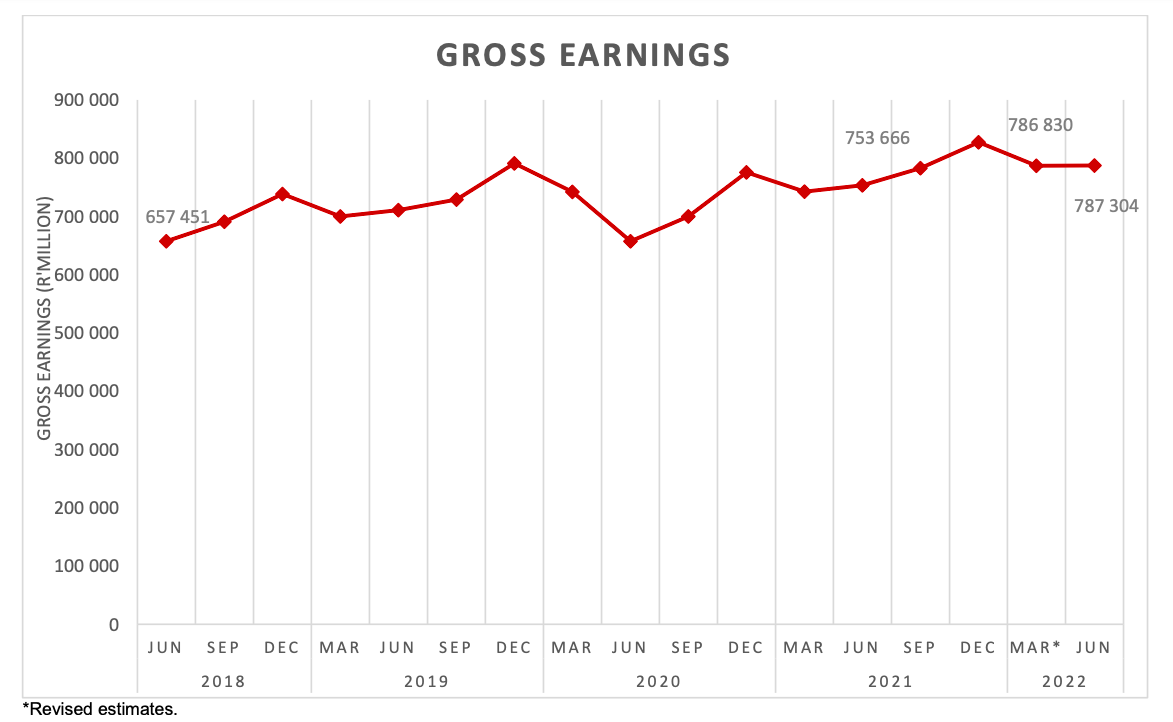EMPLOYMENT DATA
South Africa shed 119,000 jobs in second quarter – Statistics SA

South Africa’s fragile economy shed almost 120,000 jobs, a fall of 1.2%, in the second quarter, according to the latest Quarterly Employment Statistics. The bottom line is that employment remains below the dismal levels recorded before the pandemic.
The Quarterly Employment Statistics (QES), released by Statistics South Africa (Stats SA) on Tuesday, showed that total employment in the three months to June fell by 119,000 to 9,948,000, from 10,067,000 in March.
Stats SA estimated in June that the country’s population was just over 60 million, so roughly one in six South Africans has a paying job in the formal sector.
Put another way, five out of six don’t. This explains why many, and probably most, breadwinners in South Africa have multiple dependants, and even taxpayers with no offspring or immediate dependants are carrying the can for the rest. If so much of that money wasn’t stolen or squandered, this would be an easier burden to bear.
It must be said that the QES – like its twin, the Quarterly Labour Force Survey (QLFS), which measures the unemployment rate – is not taken by economists to be set in stone. Both have question marks around methodology and they can paint different pictures of the employment situation in the same period.
For example, the QLFS – based on household surveys covering the entire economy – showed a rise of 420,000 jobs in the formal, non-agricultural sector of the economy in Q2, translating into a slight fall in the unemployment rate to 33.9%.
Visit Daily Maverick’s home page for more news, analysis and investigations
“We believe that apparent job gains shown in the QLFS could be largely attributable to improved response rates, as the survey moved back to face-to-face, rather than telephonic interviews,” Absa said in a note before the QES was published.
‘Apparent’ is the operative word here, as most other indicators for the quarter – which saw the economy contract 0.7% on a quarterly basis – hardly signalled job creation.
So, that helps to explain why the QES – based on surveys of companies in the non-farm space – and the QLFS have diverged, with one showing employment growth, the other, shrinkage.
Still, both are indicators of broad trends, and those clearly are not good at the moment. The QES shows that formal employment levels remain stuck below pre-pandemic levels. Many of the jobs lost during the harshest lockdown periods – in hindsight, many of the restrictions were certainly questionable –have not come back.
The labour-intensive food and beverage sector, for one, is still battling to regain lost ground.
SA’s food and beverage sector battling to rebound after pandemic, lockdown measures
Stats SA said in a statement that the quarterly decline in employment “was largely due to decreases in the following industries: community services (-100,000); business services (-15,000); construction (-13,000); manufacturing (-12,000); and electricity (-1,000)”.
“Most job losses were recorded in the community services sector and were most likely linked to temporary census work,” Koketso Mano, FNB Senior Economist, said in a note on the data.
On the other hand, gross earnings increased 0.1% on a quarterly basis and 4.5% compared with a year ago, bringing this number above levels that prevailed three years ago. Among other things, this points to solid wage increases for many of those fortunate enough to have a job, though inflation is eating into those gains.
“Prevailing geopolitical tensions, elevated inflation and tightening global financial conditions are expected to slow the momentum in global growth. This, along with local energy supply constraints, are likely to impede employment prospects…
“Ultimately, the employment recovery to pre-pandemic levels may still be protracted in the near term, lagging the recovery in earnings,” FNB’s Mano said.
The legacy of the pandemic is still taking its toll. DM/BM





















 Become an Insider
Become an Insider
Good morning – I have several questions on the employment statistics as well. Especially around the informal sector. How is this confirmed – if one looks at worldwide date (ourworldindata) then RSA is almost the worst ito of employment and has been since the 1980s/1990s. So are we measuring differently to the rest of the world or are we really that bad.
If one asks someone in the informal sector if they are employed – they often say no. They have an income even if it is vegetable selling on the street and they have been doing this for 20 years. Are they employed or unemployed in our statistics?